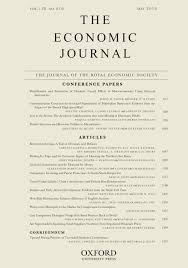
Lanjouw, P. and Ravallion, M. (1995). Poverty and household size Economic Journal, 105(433):1415--1434.
-
Affiliated author
-
Publication year1995
-
JournalEconomic Journal
The widely held view that larger families tend to be poorer in developing countries has influenced research and policy. The scope for size economies in consumption cautions against this view. The authors find that the correlation between poverty and size vanishes in Pakistan when the size elasticity of the cost of living is about 0-6. This turns out to be the elasticity implied by a modified version of the food share method of setting scales. By contrast, some measures of child nutritional status indicate an elasticity of unity. Consideration of the weight attached to child versus adult welfare may help resolve the non-robustness of demographic profiles of poverty. -Authors